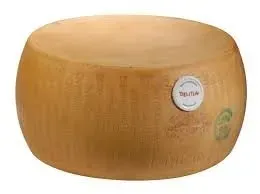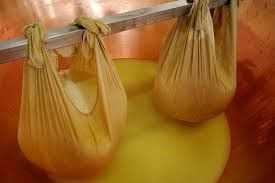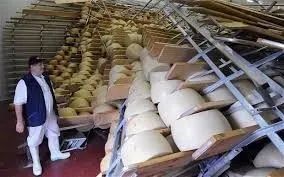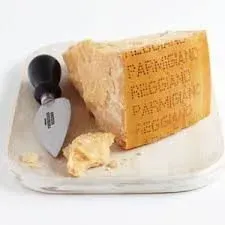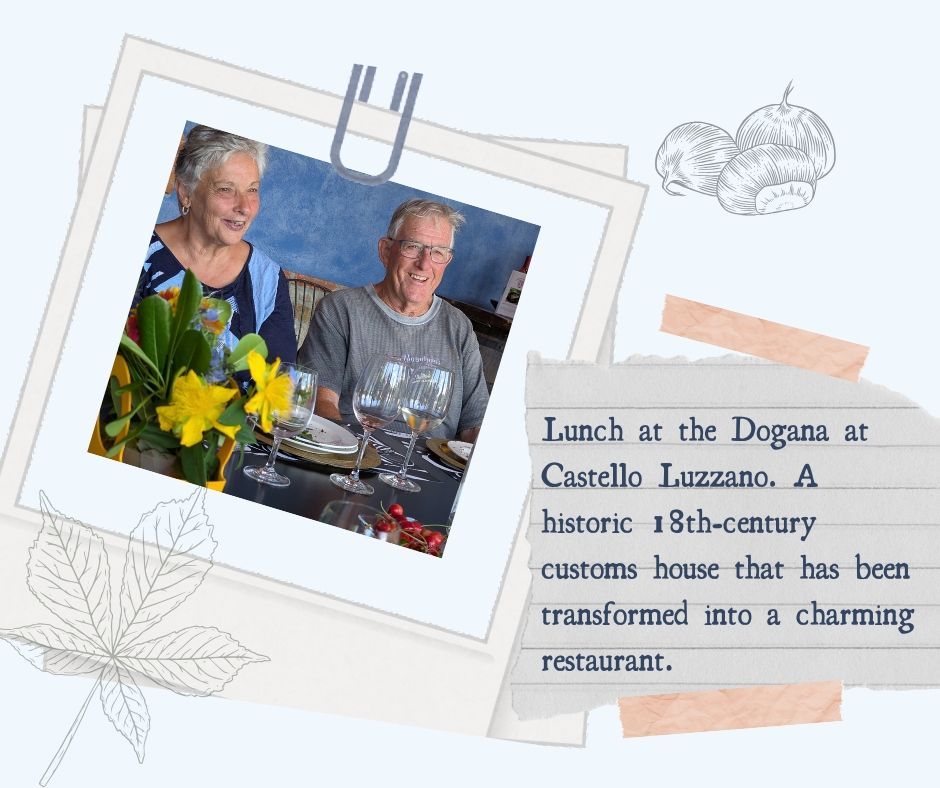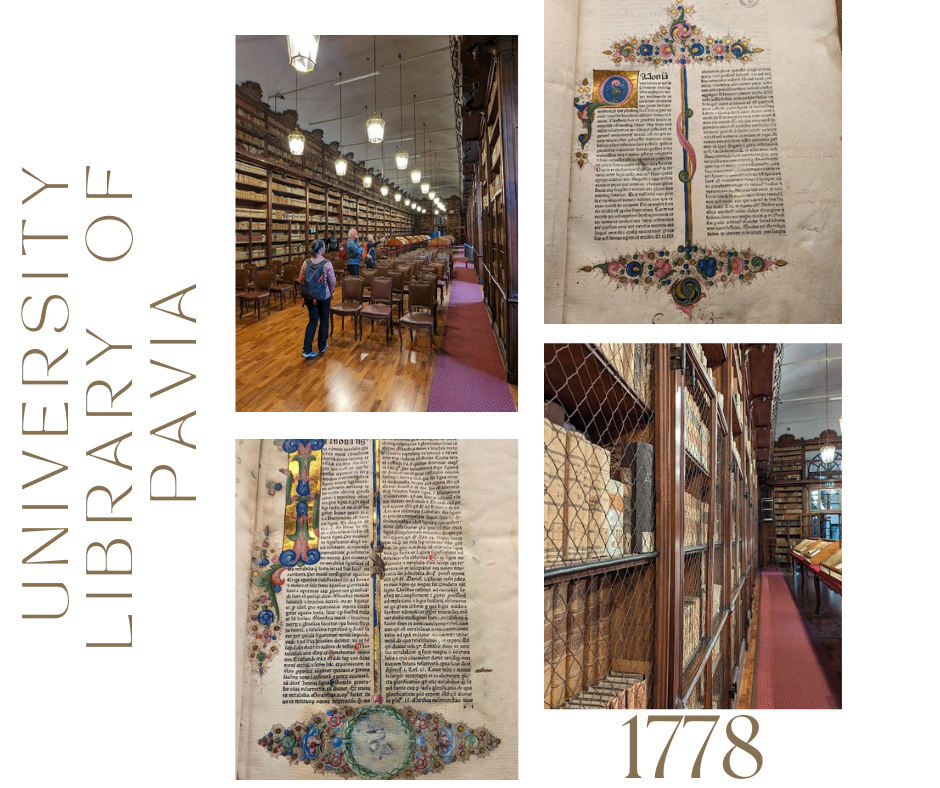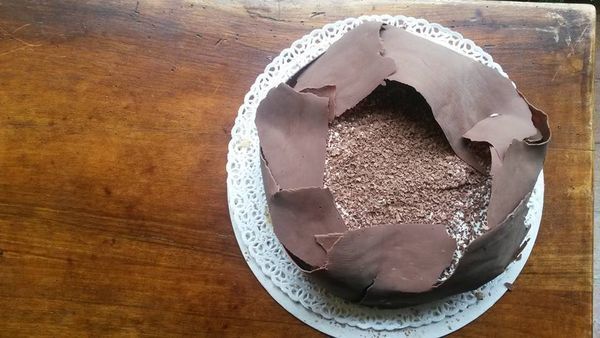Parmigiano Reggiano- King of Cheeses!
Jim and Lynette Romagnesi • May 27, 2016
Incredibly, the king of cheeses has been made almost exactly the same way for eight centuries, under extremely strict standards, using only the milk of cows raised under equally strict standards. The taste is slightly sharp, a bit like mildly sharp cheddar, but also very complex and layered. It is also a bit fruity, though nutty is the predominant characteristic. Then there is the wonderful aftertaste it leaves on the tongue. It can be served in chunks on its own or with a high quality balsamic vinegar drizzled on it or used to improve almost any dish it is added to from salads to steak.
We can thank the Benedictine monks from the 13th century for this long-aged cheese. The monasteries in the provinces of Parma, Reggio Emilia, Modena and Bologna had large areas of land, much of it given over to dairy cow grazing. As cow's milk is heavily influenced by the diet of the animal, the clover and the lucerne which were cultivated, gave a particular flavour to the milk that came through.
Today Parmigiano- Reggiano is is produced exclusively in the provinces of Parma, Reggio Emilia, Modena and parts of the provinces of Mantua and Bologna, on the plains, hills and mountains enclosed between the rivers Po and Reno.
This area hosts four thousand farms where the cattle are fed on locally grown forage. The feeding of cattle complies with the norms of a strict specification that bans the use of silage and fermented feeds.
Regular controls are carried out on the milk used in the process to ensure the high quality and the presence of special characteristics, which allow Parmigiano-Reggiano to continue to be, as it always has been, a purely natural product, completely without additives or preservatives.
Parmigiano- Reggiano is built around the ideal of perfection in every single wheel. These cheeses are scrutinised by the experts of the Consortium who examine each cheese one by one!
Day 7 of our 12 Day Lake Garda and Northern Italy Cultural and Culinary Delights Tour takes you on a journey to experience the production of Parmigiano-Reggiano for yourself.
Every day, the milk from the evening milking is left to rest until morning in large vats, where the fatty part spontaneously rises to the surface. This is used for the production of butter.
As soon as the whole milk from the morning milking arrives from the farm, the skimmed milk from the night before is poured into the typical bell-shaped copper cauldrons where calf rennet and fermented whey, rich in natural lactic ferments obtained from the processing of the day before, are added.
The milk coagulates in around ten minutes, and the curd which forms is then broken down into minuscule granules using a traditional tool called “spino”.
Then a cooking process is applied which reaches 55 degrees centigrade, after which the cheesy granules sink to the bottom of the cauldron forming a single mass.
After resting for around thirty minutes, the cheese mass is removed.
Cut into two parts and wrapped in its typical cloth, the cheese is then placed in a mould which will give it its final shape.
Each cheese is given a unique, progressive number using a casein plate and this number remains with it just like an identity card.
After a few hours, a special marking band engraves the month and year of production onto the cheese, as well as its cheese dairy registration number and the unmistakable dotted inscriptions around the complete circumference of the cheese wheel, which is then, after a few days, immersed in a water and salt-saturated solution.
It is a process of salting by absorption which, within less than a month, closes the production cycle and opens the not less fascinating cycle of maturation.
The cheese is allowed to rest on wooden tables where the outside of the cheese dries forming a natural crust without being treated in any way and therefore remaining perfectly edible.
The minimum maturation time is twelve months, and only at this point can it be decided if each individual cheese is worthy of the name it was given at its birth.
After the Control Body’s inspection, a mark is fire-branded onto the individual cheeses which meet the requirements of the Protected Designation of Origin.
All identifying marks and the dotted inscriptions are removed from any cheeses which do not meet the PDO requirements. It is one of the most crucial moments for the cheese makers and also one of the most important for the consumers: the moment of selection and the granting of a certificate of absolute guarantee for the product.
The cheeses which are sent for sale to the consumer as fresh (a term which may sound curious for a product which has been maturing for a year) will have parallel lines engraved on them which render them immediately recognisable by the consumer. This is the second class of Parmigiano-Reggiano called “mezzano”.
When the cheese has matured for 18 months, the mark "Extra" or "Export" can be added. A system of coloured seals help the consumer identify the level of maturation of the pre-packaged
A red seal identifies the Parmigiano-Reggiano which has been matured for over 18 months. This product has a rather strong milk flavour, with aromatic notes such as herbs, flowers and fruits which make it ideal for snacks and aperitifs.
A silver seal identifies cheese which has been matured for over 22 months, with decidedly stronger aromas. In these cheeses the notes of fresh and citrus fruit can be tasted, along with a hint of nuts.
Finally, a gold seal identifies a cheese which has been matured for over 30 months and has the most distinctive flavour and complex aromas, with a higher nutritional element concentrated over its long maturation.
If you can read “Parmigiano Reggiano” in dots all over the rind it’s another sign that you’ve got the real thing!
Professional cheese testers (battitores) "listen" to each wheel of Parmigiano Reggiano by placing the 85-pound wheel on a special stand and gently tapping it with a small "martello" or hammer to detect flaws in texture and structure. They are also experts at evaluating the colour, aroma and maturation of the cheese—all without breaking it open!
WARNING! Whether you can speak Italian or not this ad will get inside your head. Pubblicità completa Parmigiano Reggiano
If we have whet your appetite for this delicious cheese, why not join us on our 12 Day Lake Garda and Northern Italy Cultural and Culinary Delights Tour. Where on Day 7 of this tour we will be taking you to a Parmigiano- Reggiano production plant where you will see firsthand the process of making this cheese.

